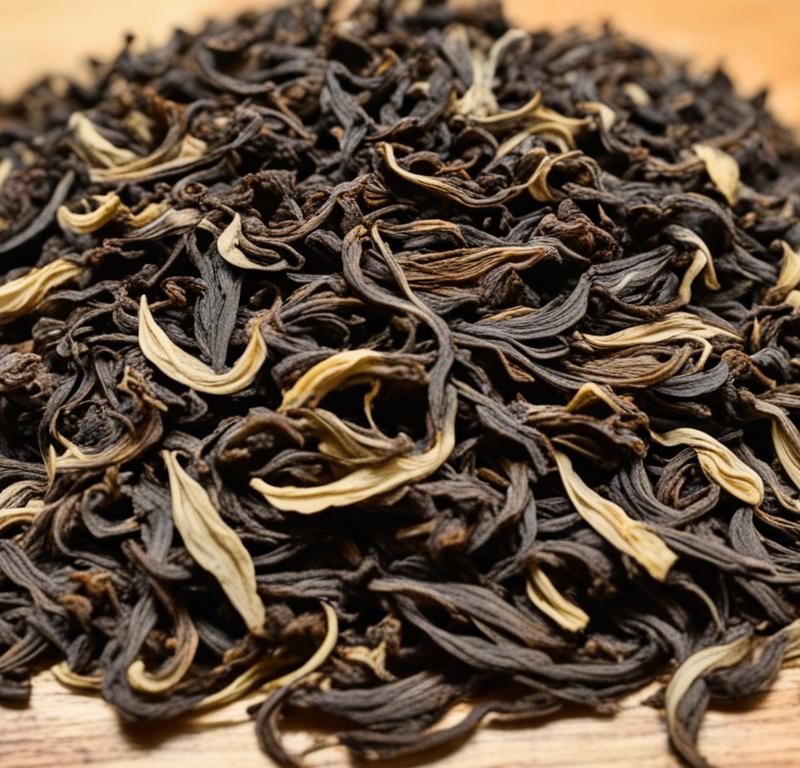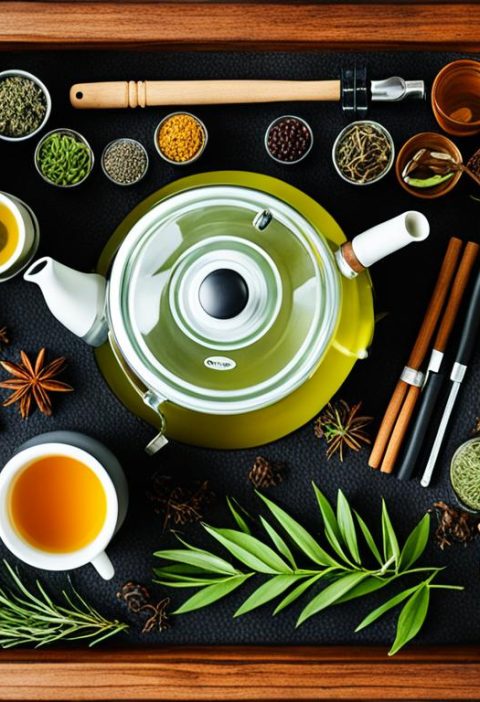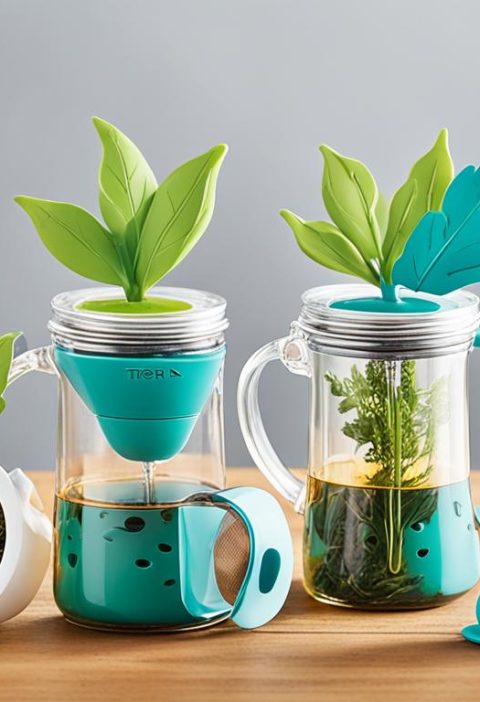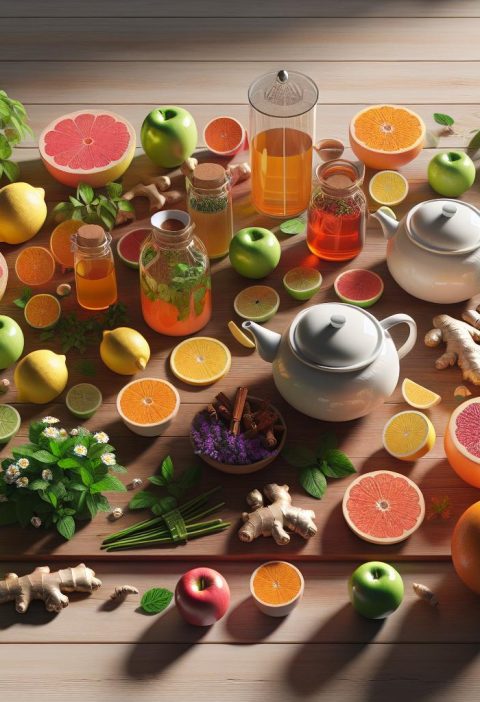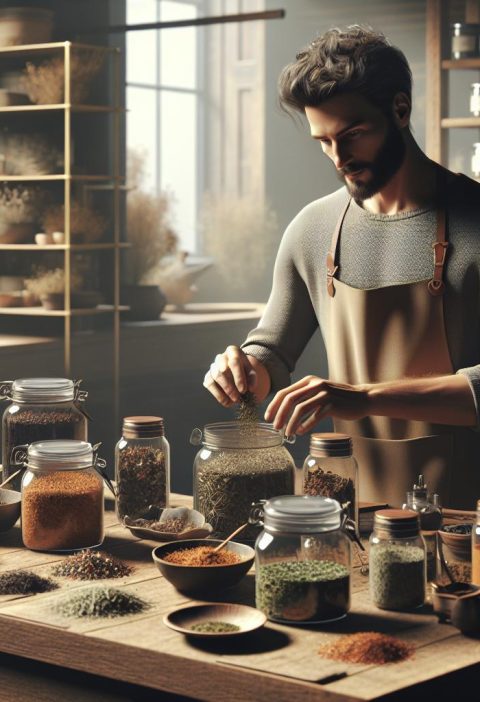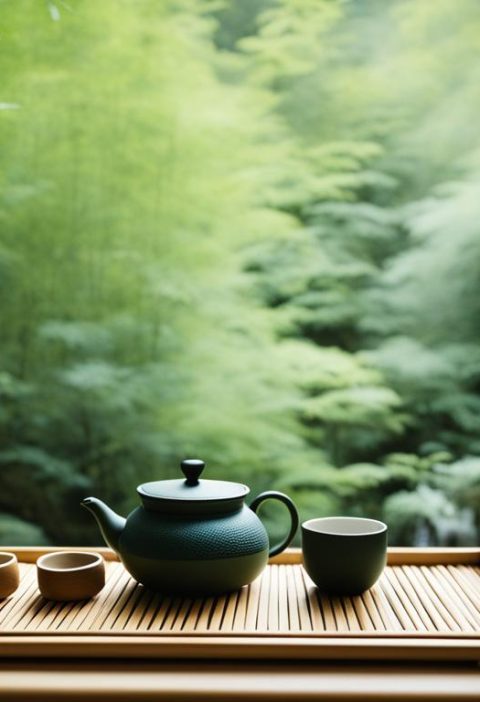Pu Erh tea, with its rich history and unique flavor profile, is a beloved tea variety that originates from Yunnan Province, China. Made from large-leaf tea trees, Pu-Erh tea undergoes a fermentation process that contributes to its distinct taste. The aging of Pu-Erh tea results in a transformation of its color and flavor, offering a rich, fruitier, and smoother experience. To truly master Pu-Erh tea flavors, it is essential to understand the art of perfect steeping. In this article, we will delve into the fermentation process of Pu-Erh tea, how to choose and brew it, the characteristics of its flavor, the importance of proper aging and storage, the different types of Pu-Erh tea available, its cultural significance, and the various steeping techniques to enhance its taste. Join us on this journey to unlock the full potential of Pu-Erh tea flavors through perfect steeping techniques.
Key Takeaways:
- Pu-Erh tea is a unique tea variety with a distinct flavor profile and reported medicinal qualities.
- It undergoes a fermentation process that changes its color and flavor.
- Choosing Pu-Erh tea from reputable sources and using the right brewing methods are crucial for a flavorful experience.
- Pu-Erh tea has a complex flavor profile with earthy, floral, and savory notes.
- Proper aging and storage can enhance the flavors of Pu-Erh tea over time.
- There are different types of Pu-Erh tea, each with its own characteristics and steeping techniques.
- Pu-Erh tea holds cultural significance in Chinese tea culture and history.
- The art of Pu-Erh tea steeping involves precision and attention to detail.
- Exploring the world of Pu-Erh tea varieties allows for a diverse and flavorful tea-drinking experience.
The Fermentation Process of Pu-Erh Tea
Pu-Erh tea, known for its unique and complex flavors, undergoes a fascinating fermentation process that contributes to its distinctive taste profile. This process can occur naturally through aging or be sped up through artificial means. During fermentation, micro-organisms play a crucial role in transforming the tea leaves and developing the desired flavors.
There are two primary categories of Pu-Erh tea:
- Sheng pu-erh: Also known as raw or unripe pu-erh, this variety is aged naturally over time, allowing for slow fermentation. The tea leaves are carefully stored and allowed to mature, enhancing their flavor complexity and depth. This prolonged aging process contributes to sheng pu-erh’s higher price and sought-after taste.
- Shou pu-erh: Also referred to as ripe or cooked pu-erh, this type undergoes a faster fermentation process to accelerate its aging. Microbes and controlled humidity are used to mimic the natural aging process, resulting in a tea that is ready to drink sooner. Shou pu-erh offers a mellow and smoother flavor compared to its raw counterpart.
The fermentation process of Pu-Erh tea is vital in creating its distinct and complex flavors. The interaction between micro-organisms and tea leaves during aging influences the final taste, aroma, and quality of the tea. Let’s delve deeper into the world of Pu-Erh tea brewing and explore the best practices for extracting its captivating flavors.
How to Choose and Brew Pu-Erh Tea
When it comes to choosing and brewing Pu-Erh tea, following the best steeping practices is essential to unlock its true flavors and enjoy a delightful tea-drinking experience. Whether you are a seasoned tea enthusiast or just starting your journey into the world of Pu-Erh tea, here are some tips to help you make the most of this unique beverage.
Choosing Pu-Erh Tea
When selecting Pu-Erh tea, it is important to source it from reputable sources such as specialty tea shops or trusted online stores. Look for vendors that offer samplers or smaller amounts for experimentation, allowing you to explore different varieties and find the ones that suit your taste preferences. This way, you can ensure that you are getting high-quality Pu-Erh tea that will deliver the best flavors.
Brewing Techniques
The brewing process is equally crucial, as it determines the taste and aroma of your Pu-Erh tea. To bring out the distinct flavors and characteristics of the tea, consider using glass teapots or porcelain gaiwans for brewing. These materials help preserve the delicate aromas and allow you to observe the beautiful color changes that occur during steeping.
When it comes to brewing time, avoid oversteeping your Pu-Erh tea to prevent bitterness. The optimal steeping time can vary depending on the type and age of the tea. As a general guide, start with shorter steeping times and gradually increase if desired. This will allow you to discover the perfect balance and intensity of flavors that suit your palate.
Enjoyment and Benefits
Pu-Erh tea is best enjoyed after meals, as it is believed to aid digestion and reduce fat. Take the time to savor each sip and appreciate the unique taste profile of Pu-Erh tea. Its earthy aroma, floral or mushroom notes, and astringent yet savory flavors will surely captivate your senses.
By following these best steeping practices, you can ensure that every cup of Pu-Erh tea you brew delivers the ultimate indulgence and fullness of flavors. Experiment, explore, and discover the magic of Pu-Erh tea, a beverage that embodies the richness and depth of ancient tea traditions.
The Characteristics of Pu-Erh Tea
Pu-Erh tea is renowned for its distinct characteristics that make it a favorite among tea connoisseurs. Its rich, dark color when steeped and complex flavor profile have garnered it a loyal following. The unique attributes of Pu-Erh tea are influenced by various factors, including the aging process, storage conditions, and the specific type of Pu-Erh.
When brewed, Pu-Erh tea exhibits an earthy aroma and flavor profile that is often accompanied by floral or mushroom notes. Its robust and full-bodied taste is complemented by an astringent quality that leaves a refreshing sensation on the palate. With each steeping, the flavor of Pu-Erh tea becomes more pronounced and nuanced, allowing for a truly immersive tea-drinking experience.
To enhance the flavor of Pu-Erh tea, it is vital to understand the characteristics and nuances associated with different types of Pu-Erh. Here are some key aspects to consider:
- Aging: The aging process of Pu-Erh tea plays a significant role in developing its flavor. As the tea ages, its taste profile evolves, resulting in a richer and smoother flavor.
- Storage conditions: How Pu-Erh tea is stored can impact its flavor. Properly stored tea tends to develop a more refined and mellow taste over time.
- Type of Pu-Erh: The specific type of Pu-Erh, such as sheng or shou, can influence the flavor. Sheng Pu-Erh is known for its raw, grassy taste, while shou Pu-Erh offers a deep, earthy flavor.
The exceptional flavor profile of Pu-Erh tea makes it a versatile beverage that can be enjoyed on its own or paired with various foods. Its earthy and robust taste pairs well with savory dishes and enhances the flavors of rich desserts.
The Flavor Journey of Pu-Erh Tea
The flavor journey of Pu-Erh tea begins with the first steeping and continues to evolve with subsequent infusions. As each steeping extracts different compounds from the tea leaves, the flavor profile becomes more intricate and multifaceted.
Here is a breakdown of the flavor notes that can be experienced during the steeping process:
| Steeping | Flavor Notes |
|---|---|
| First steeping | Earthy, woody, and slightly bitter with hints of floral or mushroom notes |
| Second steeping | Deeper earthy notes with increased sweetness and a smoother finish |
| Subsequent steepings | Continued development of earthy flavors, with subtle nuances and a lingering sweetness |
As tea enthusiasts embark on multiple steepings, they uncover the hidden layers of flavor within the Pu-Erh leaves. With each infusion, the experience becomes more enjoyable as the tea gradually reveals its complexity.
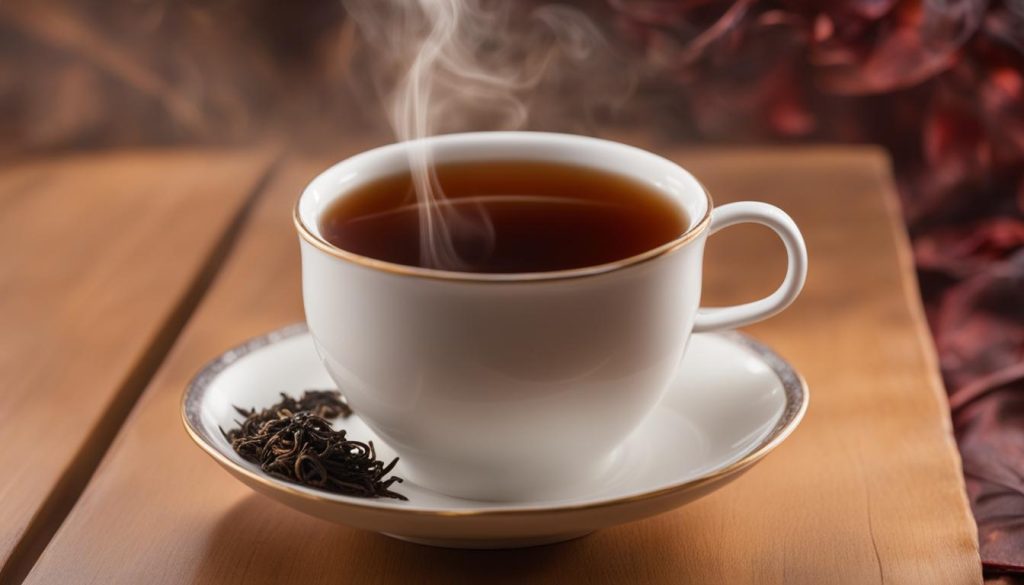
The Importance of Proper Aging and Storage
Proper aging and storage are essential factors in maximizing the flavors of Pu-Erh tea. By exposing the tea to the right level of moisture and humidity, we can enhance the fermentation process and prevent the growth of mold. This ensures that the tea develops its distinct flavor profile and maintains its quality over time.
Pu-Erh tea is unique in that it can be stored and oxidized over time, resulting in a purer and more refined flavor. As the tea ages, it undergoes chemical changes that deepen its complexity and enhance its taste. The longer Pu-Erh tea is stored, the better its quality becomes, making it a cherished choice for tea enthusiasts.
To achieve optimal aging and storage conditions, it is crucial to find an environment with consistent temperature and humidity levels. Pu-Erh tea should be stored away from strong odors and sunlight, as these can affect the tea’s flavor and aroma. Additionally, proper storage containers, such as ceramic jars or bamboo baskets, can help maintain the tea’s quality by allowing it to breathe and retain its unique characteristics.
By carefully aging and storing Pu-Erh tea, you can unlock its full potential and enjoy a truly exceptional tea-drinking experience. The flavors and aromas that develop over time will captivate your senses and create a moment of pure indulgence. So, embrace the art of aging and storage to savor the true essence of Pu-Erh tea.
Different Types of Pu-Erh Tea
When it comes to Pu-Erh tea, there are various types to choose from, each with its own unique characteristics and flavors. Understanding the differences between these types can help you make an informed decision and find the perfect Pu-Erh tea to suit your taste.
1. Loose Leaf Pu-Erh Tea: This is the most common form of Pu-Erh tea and is known for its convenience and versatility. Loose leaf Pu-Erh tea consists of individual tea leaves that can be steeped in a teapot or infuser. It allows for easy experimentation with steeping times and water temperatures to maximize flavor extraction.
2. Pu-Erh Tea Bricks: Pu-Erh tea bricks are compressed tea leaves that have been shaped into rectangular blocks. This traditional form of Pu-Erh tea is compact and can be easily stored and transported. To prepare Pu-Erh tea bricks, simply break off a small piece and steep it in hot water.
3. Pu-Erh Tea Cakes: Pu-Erh tea cakes are similar to tea bricks but are shaped like small, round cakes. These cakes are typically wrapped in paper or cloth, which helps with aging and storage. To enjoy Pu-Erh tea cakes, break off a portion and steep it in hot water to release the flavors.
4. Pu-Erh Tea Balls: Pu-Erh tea balls, also known as tuocha or mini tuo, are small, dome-shaped tea cakes. These compact and convenient Pu-Erh tea balls are individually wrapped and perfect for single servings. Simply drop one tea ball into a teapot or cup and steep it in hot water.
Choosing the Right Pu-Erh Tea Type
The choice of Pu-Erh tea type depends on your personal preferences and desired flavor profile. If you enjoy experimenting and customizing your tea steeping, loose leaf Pu-Erh tea is a great option. If you prefer the convenience of pre-measured servings, Pu-Erh tea bricks, cakes, or balls may be the right choice for you.
To find the Pu-Erh tea type that suits your taste, we recommend trying out different varieties and steeping techniques. This will allow you to explore the unique flavors and nuances of each type, and discover the Pu-Erh tea that brings you the most enjoyment.
Here is a comparison table of the different types of Pu-Erh tea:
| Type of Pu-Erh Tea | Characteristics | Recommended Steeping Technique |
|---|---|---|
| Loose Leaf Pu-Erh Tea | Individual tea leaves | Steep in a teapot or infuser |
| Pu-Erh Tea Bricks | Rectangular blocks | Break off a small piece and steep in hot water |
| Pu-Erh Tea Cakes | Round cakes | Break off a portion and steep in hot water |
| Pu-Erh Tea Balls | Small, dome-shaped cakes | Drop one tea ball into a teapot or cup and steep |
Experimenting with different types of Pu-Erh tea can enhance your tea-drinking experience and help you discover new flavors. Whether you choose loose leaf, bricks, cakes, or balls, each type offers a unique journey into the world of Pu-Erh tea.
Pu-Erh Tea and Traditional Chinese Culture
Pu-Erh tea is deeply intertwined with the rich tapestry of Chinese culture and history. For centuries, this exquisite tea has been cherished by both royalty and the elite classes, celebrated for its distinctive flavor and revered medicinal properties.
Chinese tea ceremonies have long been an integral part of cultural traditions, and Pu-Erh tea holds a special place in these ceremonial rituals. Its consumption is often associated with promoting health and longevity, making it an essential component of Chinese lifestyle and well-being.
In recent years, the allure of Pu-Erh tea has captivated Western markets, introducing a broader audience to the enchanting flavors and captivating customs of Chinese tea culture. Its unique characteristics and the sophisticated art of tea preparation have ignited a fascination among tea enthusiasts worldwide.
Discovering Pu-Erh tea is not only an exploration of flavors but also a journey into the heart of Chinese heritage. It offers a glimpse into the holistic approach to life, where every sip is a moment of tranquility and contemplation, allowing us to connect with the ancient wisdom and traditions of Chinese civilization.
Immerse yourself in the world of Pu-Erh tea, and embark on a voyage that transcends boundaries, bridges cultures, and unveils the profound beauty of Chinese tea culture.
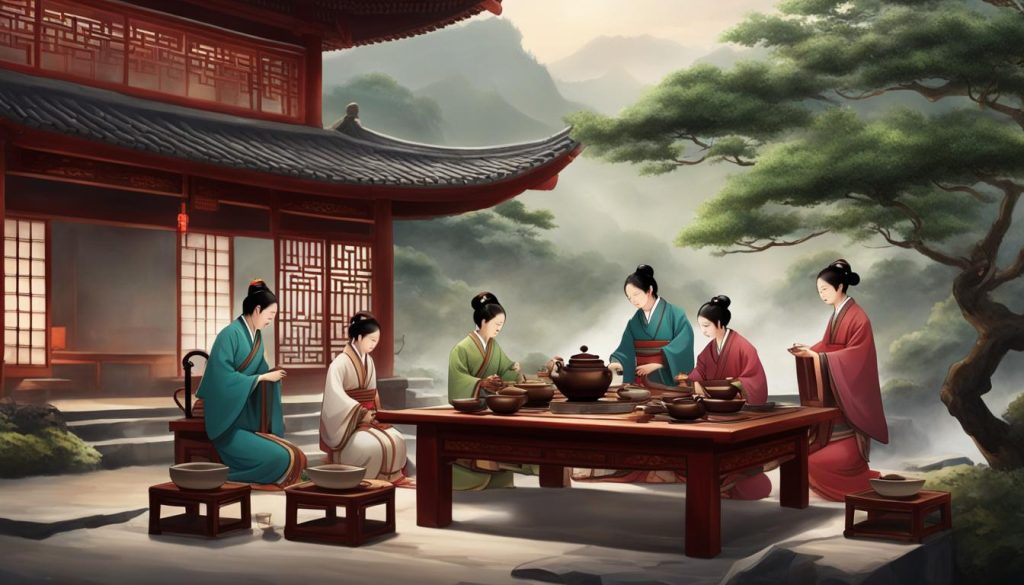
The Significance of Pu-Erh Tea in Chinese Culture
| Aspect | Explanation |
|---|---|
| Symbolism | Pu-Erh tea is seen as a symbol of unity, harmony, and respect in Chinese culture. |
| Meditation | Tea drinking is a form of meditation that promotes mindfulness and relaxation. |
| Health Benefits | Pu-Erh tea is believed to aid digestion, boost the immune system, and improve overall well-being. |
| Social Rituals | Tea ceremonies and gatherings create opportunities for bonding and forming connections. |
| Cultural Legacy | The centuries-old tradition of Pu-Erh tea reflects the enduring cultural legacy of China. |
Indulge in the enchanting flavors of Pu-Erh tea and experience the profound traditions and customs that have shaped Chinese tea culture for millennia.
The Art of Pu-Erh Tea Steeping
Steeping Pu-Erh tea is an art that requires precision and attention to detail. To fully maximize the flavors of Pu-Erh tea, it is crucial to follow the proper tea steeping techniques. Let us guide you through the key steps to enhance your Pu-Erh tea experience.
Water Temperature and Steeping Time
Choosing the right water temperature and steeping time is essential for extracting the full flavors of Pu-Erh tea. Different types of Pu-Erh tea may have different optimal steeping parameters, but as a general guideline:
- For sheng pu-erh (raw) tea:
– Water temperature: 185-200°F (85-93°C)
– Steeping time: 1-3 minutes - For shou pu-erh (ripe) tea:
– Water temperature: 212°F (100°C)
– Steeping time: 3-5 minutes
Remember, these are approximate guidelines, and you can adjust the steeping time and temperature to suit your taste preferences.
Experimenting with Steeping Techniques
Don’t be afraid to experiment with different steeping techniques to enhance the taste and aroma of Pu-Erh tea. Two popular techniques are the gongfu style and the grandpa style:
- Gongfu style: This traditional Chinese brewing method involves steeping Pu-Erh tea in a small teapot or gaiwan using a high tea-to-water ratio. The tea is steeped for short periods, allowing for multiple infusions and the extraction of layered flavors.
- Grandpa style: This simpler method involves adding Pu-Erh tea leaves directly to a drinking vessel, such as a glass or mug, and continuously adding hot water throughout the day. The tea leaves remain in the vessel, gradually releasing their flavors.
Both techniques offer unique experiences, so feel free to explore and find the one that suits your preferences.
The Role of Tea Leaves and Brewing Vessels
When steeping Pu-Erh tea, the quality of the tea leaves and the choice of brewing vessel can greatly impact the final flavors. Use high-quality, loose-leaf Pu-Erh tea for the best results. The leaves should be whole and intact, as they contribute to the depth and complexity of the tea’s flavor.
Choosing the right brewing vessel is equally important. Glass teapots and porcelain gaiwans are commonly used for Pu-Erh tea. Their transparency allows you to observe the tea leaves as they steep, enhancing the visual enjoyment of the brewing process.
Remember to pour the tea into separate cups to fully appreciate its color and aroma.
Enhance your Pu-Erh tea experience by mastering the art of tea steeping. By following the recommended water temperature and steeping time, experimenting with steeping techniques, and choosing the right tea leaves and brewing vessels, you can fully maximize the rich flavors of Pu-Erh tea.
Exploring the World of Pu-Erh Tea Varieties
Pu-Erh tea, with its rich history and distinctive flavors, offers a vast array of varieties for tea enthusiasts to explore. From the ancient tree Pu-Erh to modern blends and infusions, there is a Pu-Erh tea to suit every palate. Each variety of Pu-Erh tea possesses its own unique characteristics, ensuring a journey of endless discovery.
Ancient tree Pu-Erh is a remarkable type of tea, crafted from trees that have stood for centuries or even millennia. These trees, steeped in history, produce leaves that yield deep and complex flavors. The result is a tea with a smooth texture, earthy notes, and a long-lasting finish that lingers on the palate.
For those seeking a modern twist, there are Pu-Erh tea blends and infusions that combine the traditional flavors of Pu-Erh with other botanicals and ingredients. These innovative blends create a harmonious marriage of flavors, providing a refreshing and diverse tea experience. Whether it’s Pu-Erh infused with fruits, flowers, or herbs, the possibilities are endless.
Exploring the world of Pu-Erh tea is not just a journey for the taste buds, but also an exploration of the rich heritage and cultural significance behind this renowned tea. Each cup tells a story, weaving together the traditions and craftsmanship of generations past. With each sip, we embark on a voyage of flavor, immersing ourselves in the captivating world of Pu-Erh tea.
